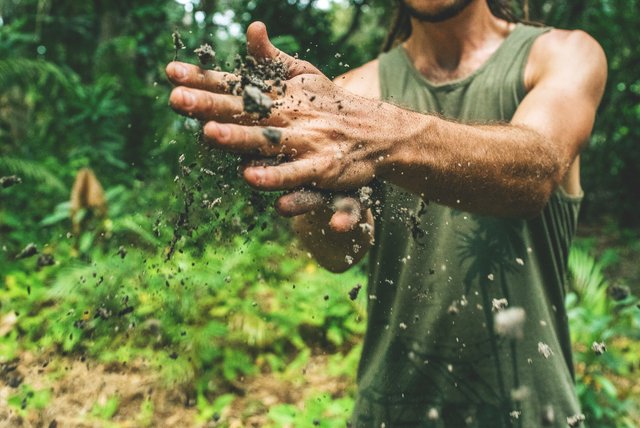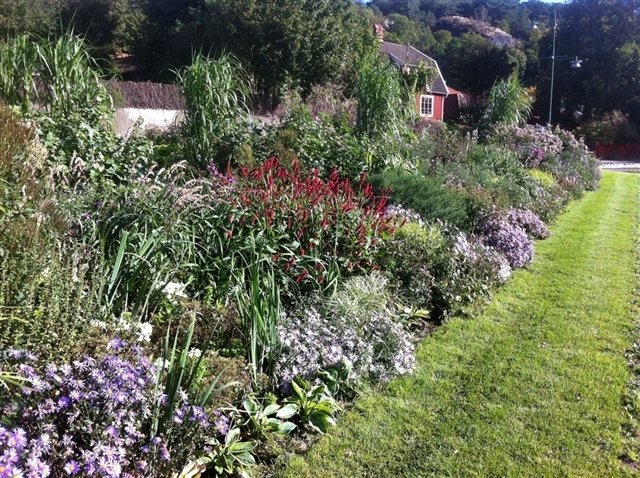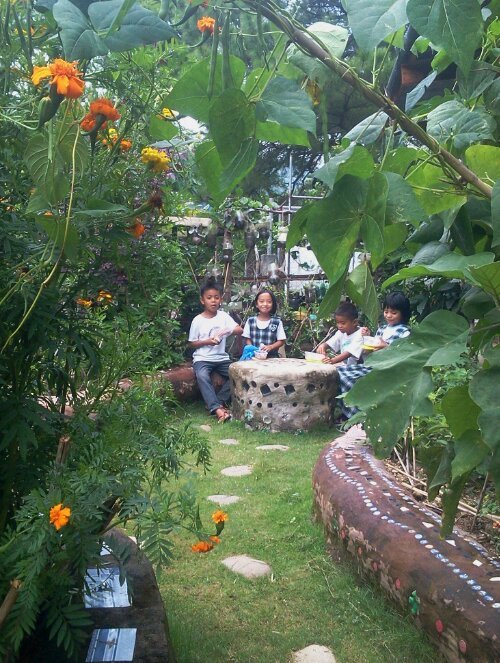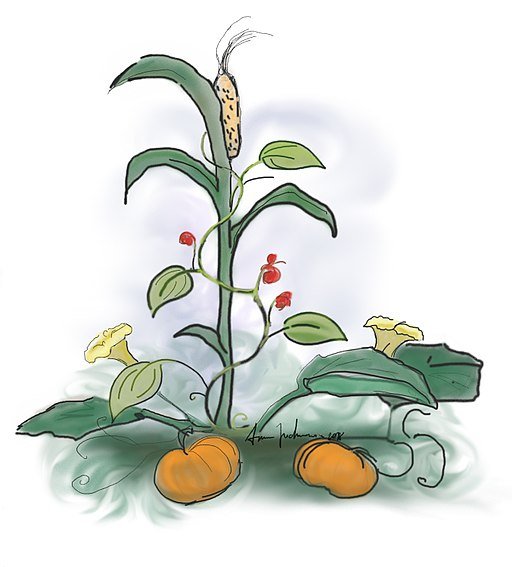Permaculture - Basic tips for permaculture gardeners (lesson 26)
Basic tips for permaculture gardeners:
1)) Soil building
The efficiency of the garden is evidenced by the soil, and above all, by the thickness of the humus layer. This information is no surprise to anyone who has read my previous lessons.
Nature builds soil in many ways - from above, through rainfall, leaves falling from trees, decaying organic matter (dead plants and animals), and from below, through the presence of many microorganisms in the soil that enrich it through their digestive processes, or through plants that extract microelements from the deeper layers of the soil with their root system. There is no place for artificial fertilizers in these natural processes, so we should avoid them.
Remember to always mulch the soil, you can also fertilize it with natural compost or manure. Periodically use plants that extract nutrients from the deeper layers of the soil. You will read about them in lesson 7. Remember that a vegetable garden with annuals and frequent harvesting will additionally impoverish the soil, so it will require more supplementation.
2)) Plant more perennials
Whenever you have a choice of perennials or annuals, go for perennials. Many plants that we know from being annuals have perennial counterparts and it is worth considering their presence in our garden. They eliminate seed starting, and the opportunity for weeds that tilling brings. Perennials need less water and fertilizer than annuals. Their deep root systems tap into pockets of moisture and nutrients that annuals just can’t reach. Also, because they are year-round plants, perennials offer dependable habitat to wildlife and beneficial insects
3)) Build a garden in three dimensions
Where possible, remember to build your garden in three dimensions, taking into account its height. Plan the presence of trees, shrubs, and climbing plants accordingly, rather than planting a uniform layer of plants in your vegetable garden. This will create an appropriate microclimate, protect more delicate plants from heat or frost, provide shelter for many useful animals, maximize the yield with limited space, and will simply look more attractive.
We will talk more about building gardens in three dimensions while describing the food forests.
4)) Include allelopathy
Allelopathy is the study of the positive and negative interaction between certain plant species. I will describe it in detail in one of the future lessons. The general rule is that plants from one family (having similar genetic material) grow less closely together and are more prone to the spread of diseases. So it is worth mixing species, taking into account their specific properties (for example, onions and garlic scare away pests). The more you mix the plants and the more diverse the environment you create, the less work your garden will require to protect the crop from diseases and pests.
5)) Stacking functions
Each element of the garden should have more than one function. We have already talked about this in previous lessons as one of the most basic principles of permaculture. Try to look at your garden from many levels, taking into account not only the yields that you can get from planting fruit and vegetables, but also their properties that protect against weather conditions, attract or repel certain animals, their visual, aromatic, therapeutic value, and the effect on the micronutrient content in soil and many other functions.
All my lessons are shared totally for free with a CC-0 license (which means you can copy my text and share it wherever you want to, without the need to mark me as an author). I hope it will bring you joy.
Previous lessons can be read here:
Fertilizers
2 - types of manure and when to use it
3 - Compost. Basics
4 - advanced composting
6 - Green manure
7 - Phytosanitary plants
8 - Mineral fertilizers
--------------------------------------------------
Soil and minerals
10 - Boron, Molybdenum, Copper, Magnesium
11 - Zinc, Calcium, Iron and other elements
12 -soil components: sand and clay
14 -soil components: calcium, microorganisms, minerals
15 -soil components: water and air
--------------------------------------------------
Space
17 - Sectors in Permaculture
18 - Zones & sectors, practical use
19 - Perfect size of your garden
20 - What to choose lawn or meadow?
22 - Water reservoirs in the garden
23 - Rock Garden
24 - Patchwalks
--------------------------------------------------
Basics of traditional permaculture
25 - Three ecological principles from the Gaia's Garden School
Thank you for reading,
@papi.mati




.jpg)
Great post as usual! I really hope such quality posts will influence others to write so beautifully 💖
Truly motivating comment! Thank you very much! 🙌🏽
What a good post! I did not know that garlic and onion scare away pests, it is a good tip! Thanks for sharing your knowledge!
#affable
Thank you very much for your comment. Yes, they are. In the garden, it's good to plant them on the outside part, making sort of "wall" with onion and garlic. I will be describing it properly very soon :)
Have a great day!
Wow... Some amazing techniqued you're sharing...🎉
This is so informative. Especially for me who is new to gardening and not interested in using artificial fertilizer for my plants.
I'm so glad, I can help :)
My lessons are based on 8-10 books about permaculture and my own experiences. Feel free to follow me for more tips and don't hesitate to ask any questions ;)
Wishing you all the best!
Thank you for sharing your knowledge. I already followed you. Shall check on your other blogs as well. Keep it up and God bless.